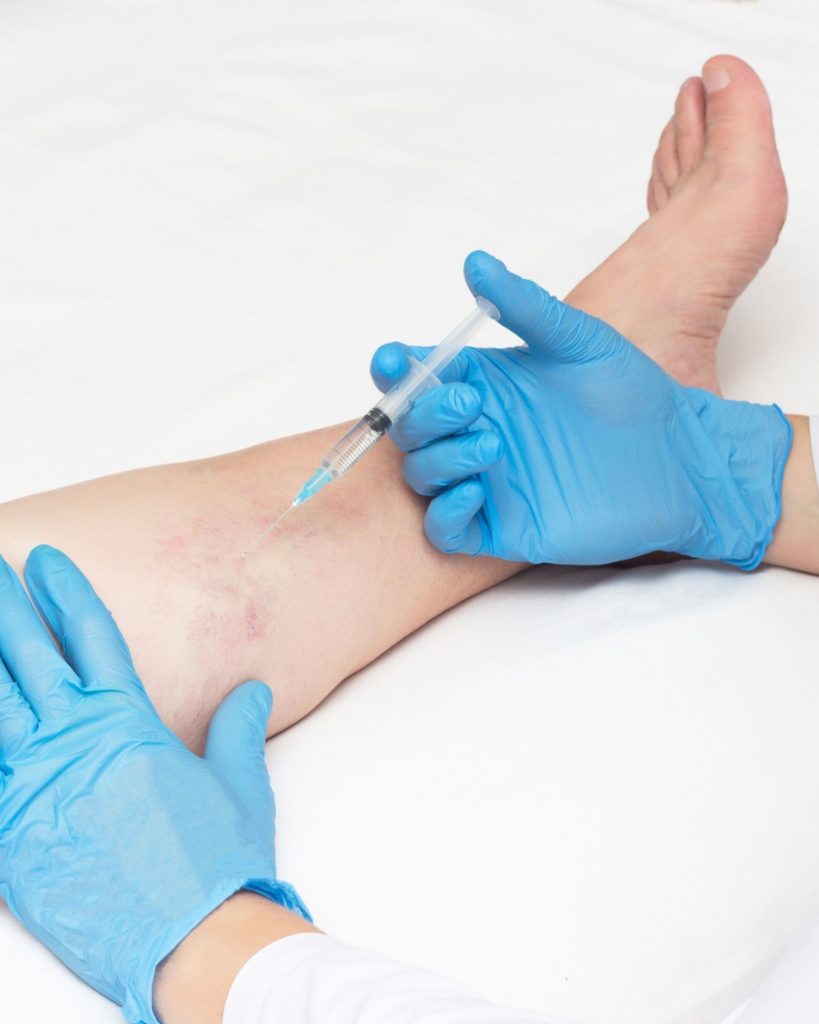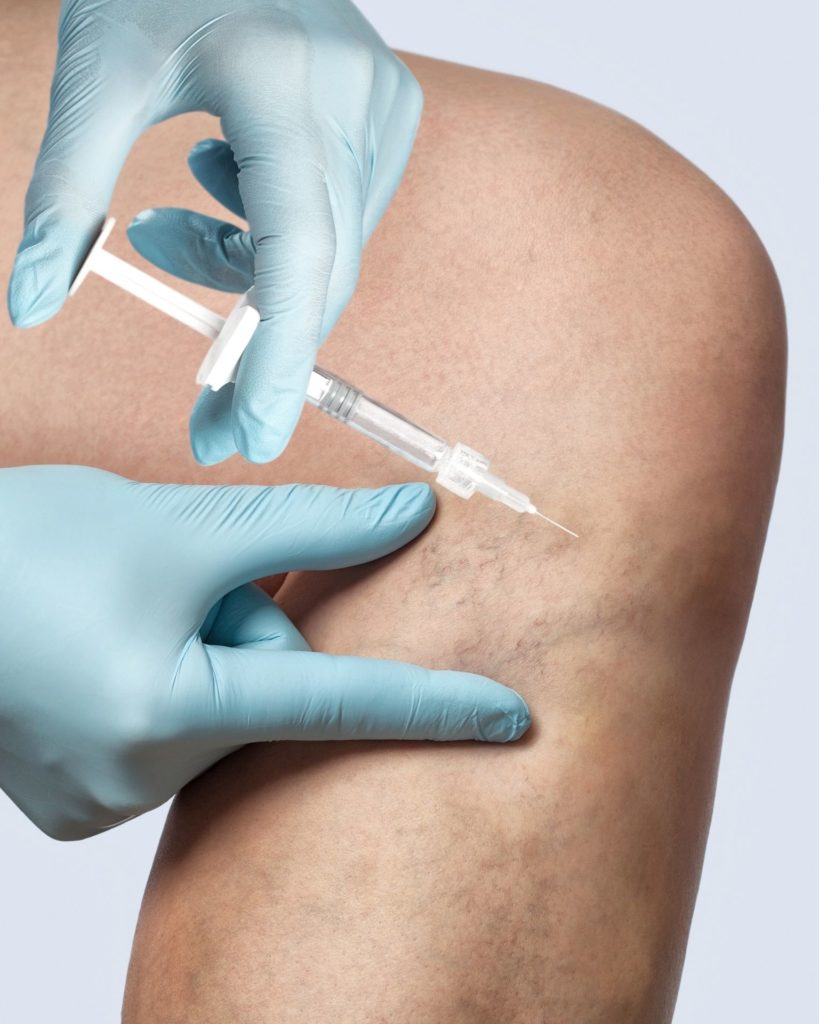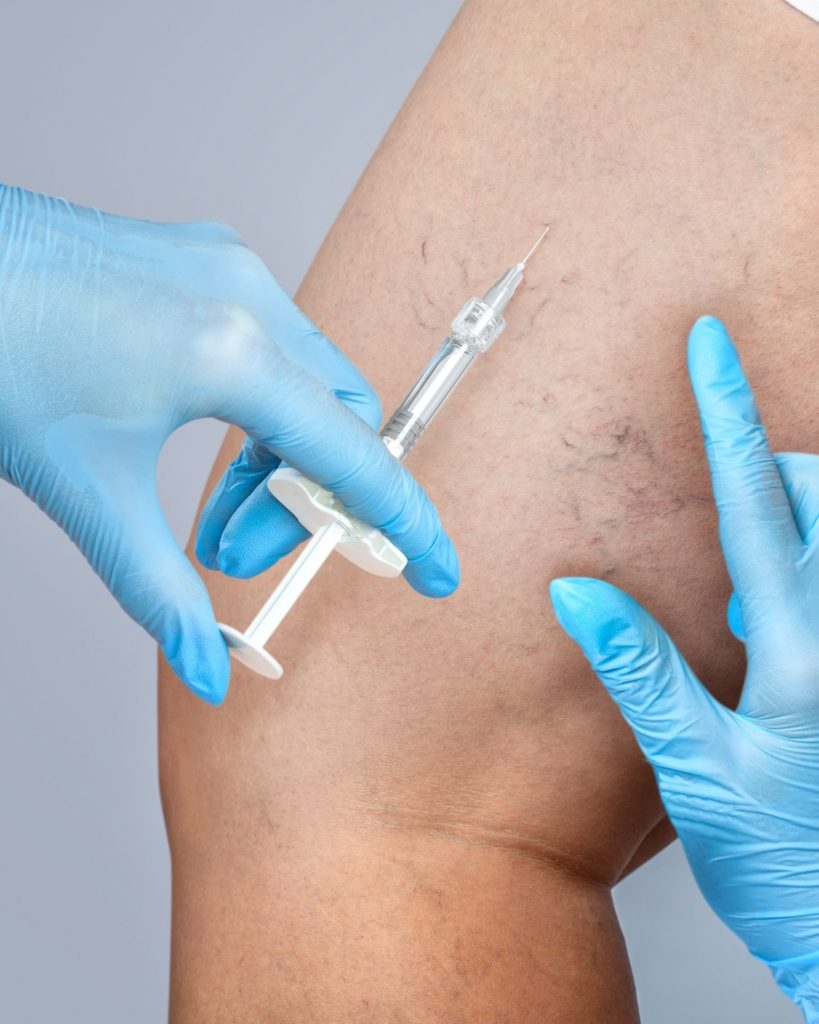Vein Injection - Sclerotherapy
Sclerotherapy
Sclerotherapy is the most common procedure used to treat spider veins in the legs. Sclerotherapy involves the sequential injection of a medical solution into various points along the spider veins with a FDA approved solutions. This causes an irritation of the inside of the spider veins, leading them to shrivel up and fade away over time.
This procedure can be done for spider veins, called visual sclerotherapy, or can be used to treat the larger veins under the skin, in which we use ultrasound guidance. When used in conjunction with ultrasound, it is referred to as ultrasound guided sclerotherapy (USGST). With ultrasound guidance, the ultrasound helps us identify the varicose vein under the skin and track the location to the key target veins needed for the optimal results. The sclerotherapy agent can be left in liquid form, or be prepared as a foam. Foam sclerotherapy is particularly useful in conjunction with ultrasound for larger veins.
In the distant past, some doctor used hypertonic saline, also known as salt injections for sclerotherapy. Today the two most common agents used in modern sclerotherapy are sodium tetradecyl sulfate (Sotradecol) and polidocanol (Asclera). Hypertonic saline is simply a saline (salt) concentrate solution which irritates the tiny veins and subsequently closes them. It was also very inexpensive which meant that physicians who use it were able to charge a little less for their services.
The most important disadvantage of hypertonic saline was that it was very painful when injected. To help ease the pain, physicians sometimes mixed lidocaine in the solution or gave their patients Valium or a pain reliever, but this rarely made the burning go away entirely. Ulceration at the injection site was also not uncommon. For these reasons, we do not use hypertonic saline in our practice. (nor do most modern vein practices).
There are two modern alternatives: sodium tetradecyl sulfate (trade name Sotradecol) and polidocanol (trade name Asclera). Both are very similar to one another. We use both in our practice. While these solutions are more expensive, they provide a safer, more effective and less painful alternative to hypertonic saline as used in the old days.
Both Sotradecol and Asclera are medical grade detergent-like solutions that work by irritating the cells of the inner lining of the vein, known as endothelial cells. After injection spider vein essentially seal shut, close down and fade away over time. In part this works by causing clotting of the tiny spider veins leaving them to eventually disappear as blood reroutes to other healthy veins. The results are very similar between Sotradecol and Asclera. Both Sotradecol and Asclera can be used in various concentrations, depending on the size, locations and treatment goals.
The Procedure
Sclerotherapy is an effective spider vein treatment that does not require anesthesia and is typically performed in our office. The procedure takes about 15 to 30 minutes, but the exact length of time depends on the size of the area and the number of veins being treated. Depending on its size, a single vein may have to be injected more than once. Multiple veins may be injected during one treatment sessions.
Photographs of the target veins to be treated will be taken before the procedure. During the procedure, you’ll lie on your back with your legs slightly elevated. Your care provider will cleanse the area to be treated before inserting a solution into the targeted vein with a very tiny needle. You may experience some minor burning or stinging with the injection, but this generally quickly fades.
After the injections, your doctor will apply compression to keep blood out of the injected vein flat and disperse the solution. A compression stocking is placed while you are still laying down, and you are advised to wear it over night the first night, then every day for a week. After the first night, you can take off the compression stocking at night.
Patients can return to work the day after the procedure and can return to regular activity including exercise the next day after the procedure. We generally see the patient back in a week or two to assess outcomes in a scheduled follow up visit. We can use the photographs to track treatment progress when needed.
Meridian Cosmetic By Dr. Ron DeMeo
We invite you to experience our complete menu of services that will further enhance your innermost beauty. Our wide range of cosmetic and medical procedures allows us to design an approach best suited to your needs. Our experienced and friendly staff will offer you the best recommendations to get exactly the results you are looking for.




